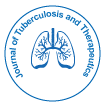Research Article
Demography and Short Term Outcome of Tuberculous Lymphadenitis; A Case Series from Central Srilanka
Madegedara D1*, Nandedeva D2 and Yasaratne BMGD21Respiratory Disease Treatment Unit II, Teaching Hospital, Kandy, Srilanka
2Consultant respiratory physician, Srilanka
- *Corresponding Author:
- Dushantha Madegedara
Respiratory Disease Treatment Unit II
Teaching Hospital, Kandy, Srilanka
Tel: 0094812384374
E-mail: dmadegedara@yahoo.com
Received Date: November 15, 2016; Accepted Date: December 19, 2016; Published Date: December 27, 2016
Citation: Madegedara D, Nandedeva D, Yasaratne BMGD (2016) Demography and Short Term Outcome of Tuberculous Lymphadenitis; A Case Series from Central Srilanka. J Tuberc Ther 1:101.
Copyright: © 2016 Madegedara D, et al. This is an open-access article distributed under the terms of the Creative Commons Attribution License, which permits unrestricted use, distribution, and reproduction in any medium, provided the original author and source are credited.
Abstract
Objective: To delineate the pattern of tuberculous lymphadenitis (TBL) and the short-term outcome following routine practice, in an endemic setting with an intermediate disease burden.
Setting: Respiratory Disease Treatment Unit (RDTU), Kandy, Sri Lanka.
Methodology: A retrospective study of TBL patients treated with ATT during the period from year 2008 January-2011 December was performed. Clinic records were reviewed and an interviewer administered questionnaire was used to assess treatment outcome.
Results: A total of 152 patients with isolated peripheral lymph node TB were listed in the database. All of them had undergone lymph node sampling. Microbiological investigations were performed only in 38 occasions. Hundred and forty four patients were started treatment according to definitive evidence and all of them had good response. Eight patients were started treatment on clinical evidence; out of them the diagnosis was changed later in four patients.CAT 2 regimen was given for only 13 patients during our study. After cessation of treatment, relapses were not detected to date.
Conclusion: We noted that the microbiological studies were heavily underutilized among patients with TBL referred from other units to RDTU. However histology based diagnosis followed by standard ATT appeared safe and effective. Even though a trial of ATT may be warranted occasionally on clinical grounds alone, these patients need close follow up to exclude co-existing/alternative pathologies. Also we noted that the adverse drug reactions were very low and response to first line ATT was high. There were no instances of drug resistance.

 Spanish
Spanish  Chinese
Chinese  Russian
Russian  German
German  French
French  Japanese
Japanese  Portuguese
Portuguese  Hindi
Hindi